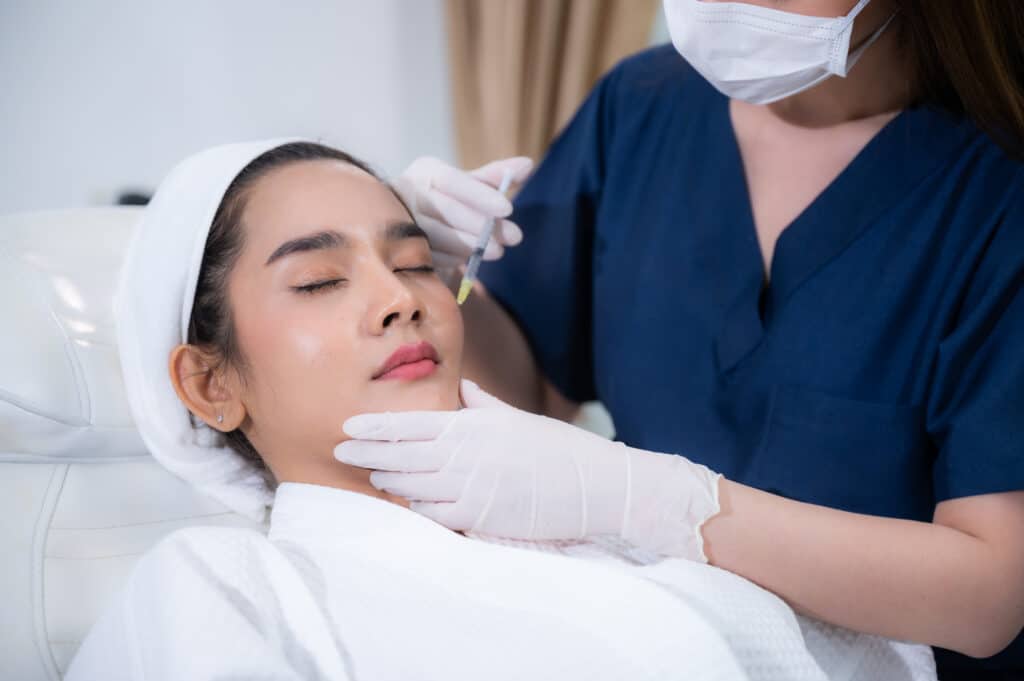


Did you know that Botox didn’t actually start off as a medical option for treating wrinkles and enhancing beauty? It actually started off with a story about eyes!
About four decades ago in the 1970’s, an eye doctor – ophthalmologist, to be exact – decided to try a controversial treatment technique that had never been done before in humans: He injected a processed form of botulism toxin, the world’s deadliest poison, into a patient’s eye muscles. That patient had been struggling with double vision for years, had already undergone three failed operations, and was desperate for a solution. It’s a happy ending to the story as it worked out. The procedure was successful, the patient was happy, and the eye doctor named Dr. Alan Scott was known as the father of what is now known as Botox.
Of course, Dr. Alan Scott did not just decide to perform the procedure without having done his due diligence. This last-resort procedure was considered only because he discovered in the early years that laboratory test monkeys responded well to injections of that drug into the eye muscles. The targeted muscle stayed ‘paralysed’, but with no ill effects to the monkey itself.
Encouraged by the success of these laboratory experiments, Dr. Alan and his colleagues went on to further develop this toxin and submitted the results for FDA approval. It was only after obtaining the Food and Drug Administration’s approval for a clinical trial that he performed that initial procedure in 1977!
After using botulinum toxin successfully in the treatment of many eye conditions such as strabismus, a condition where the eyes are crossed over and misaligned, Dr. Alan Scott sold the rights to Botox to a pharmaceutical company called Allergan. This was two decades later in 1991, and Botox was then further refined and what we know today as a treatment for wrinkles.
However, we aren’t monkeys, and we probably aren’t looking at Botox to treat an eye condition. You might still wonder how long does Botox last for those who are looking at it from an aesthetic point of view, and whether it is a worthwhile investment. Read on to find out more!
How long the Botox procedure in Singapore is will be divided into a few steps:
The doctor will assess your medical history and your goals and expectations for the procedure. This is to ensure that you are cleared for the treatment and are safe for the Botox procedure. It also helps to ensure that there is no unrealistic expectations of what Botox can do for you, and the doctor will be able to recommend a combination of treatments if so needed to achieve your aesthetic goals.
The doctor will begin by marking areas on your face with an erasable marker pen. This helps to provide a visual guide for the Botox injection points. On average, most patients require about 20-25 units of Botox for their first treatment, and Botox is charged per unit required. However, the number of units required varies by the brand of botulinum toxin used, as well as the individual’s own reaction.
The Botox injection will be done into those marked areas and will be over relatively quickly, within 10-15 minutes! If you are worried about discomfort or pain, a topical numbing cream can be applied over those areas before the injections are done. Just speak to your doctor about any concerns you might have regarding this procedure. Right after the procedure, you are free to go back to your scheduled activities with usually zero downtime, other than the precaution of not drinking alcohol for the next 24 hours or rubbing your face too much.
It merely requires one treatment session to complete the entire Botox procedure. However, a good doctor will start off with a more conservative approach and not apply too many units of Botox during the first treatment session especially if you have never done this before. This helps to prevent any ‘frozen’ looks from overdoing the Botox, and also gives more options for a return
Botox procedure if you would like more done. After all, it’s a lot easier to add on than to subtract from what has already been done. A follow-up session will be requested a few weeks after the initial procedure to assess and see if any touch-ups need to be done.
As it takes time for your muscles to relax, give it at least 2-3 days for results to appear.
How long does Botox last? Results begin to wear off after a couple of months, usually 3-4 months after the Botox injection. For some people, it can last up to 6 months, depending on each individual body. There are some factors that can influence the duration that Botox results lasts such as sleep, smoking habits, stress levels, medication, and diet.
Botox is not a permanent solution. And honestly, you wouldn’t want it to be a permanent solution! The goal of ageing is not to never age, but to age gracefully while enhancing your natural features as time passes. Botox should age together with you, and never as a solution for stopping the process.
Once the Botox begins to wear off, you are welcome to pop by to see your doctor again to discuss if you would like another round of Botox, or whether other skin-tightening procedures may be considered. There is no long-term harm in recurrent Botox procedures, as long as it is done safely and by a trained specialist who is well-equipped to advise you on the next step.
When done well, Botox results are pretty fast and natural looking, lasting for months. Get ready for comments on your youthful complexion using this proven and popular treatment for frown lines and wrinkles! If you’re ready to begin, book an initial consultation now with one of our professionals today.
Like what you read? Share them!